Kritosaurini
Kritosaurini is a clade of saurolophine hadrosaurid dinosaurs from the Late Cretaceous.
| Kritosaurini | |
|---|---|
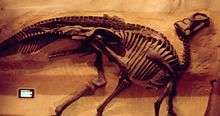 | |
| Gryposaurus notabilis skeleton at the Royal Ontario Museum | |
| Scientific classification | |
| Kingdom: | Animalia |
| Phylum: | Chordata |
| Clade: | Dinosauria |
| Order: | †Ornithischia |
| Suborder: | †Ornithopoda |
| Family: | †Hadrosauridae |
| Subfamily: | †Saurolophinae |
| Tribe: | †Kritosaurini Prieto-Márquez, 2014 |
| Type species | |
| Kritosaurus navajovius | |
| Subtaxa | |
Discovery and naming
The first member of the group discovered and named was Kritosaurus; it was named by paleontologist Barnum Brown in 1910.[1] Four years later, Canadian paleontologist Lawrence Lambe would name Gryposaurus.[2] The similarity between the two taxa was immediately recognized, and throughout the twentieth century the validity of the latter genus was doubted, with it being suggested both species were the same.[3][4] Only in the 1990s were they definitively identified as distinct.[5] Around this time, related hadrosaurs Naashoibitosaurus[6] and Secernosaurus[7] were discovered, and the modern interpretation of the group started to develop.[8]
Kritosaurini as a tribe was first proposed by Michael Brett-Surman in 1989.[8] It was first defined as a clade in 2014 by Albert Prieto-Márquez as "The most exclusive clade of hadrosaurids containing Kritosaurus navajovius Brown, 1910, Gryposaurus notabilis Lambe, 1914, and Naashoibitosaurus ostromi Hunt & Lucas, 1993".[9]
See also
Notes
- Brown, Barnum (1910). "The Cretaceous Ojo Alamo beds of New Mexico with description of the new dinosaur genus Kritosaurus". Bulletin of the American Museum of Natural History. 28 (24): 267–274. Archived from the original on 2014-10-06. Retrieved 2017-10-13.
- Lambe, Lawrence M. (1914). "On Gryposaurus notabilis, a new genus and species of trachodont dinosaur from the Belly River Formation of Alberta, with a description of the skull of Chasmosaurus belli". The Ottawa Naturalist. 27 (11): 145–155.
- Brown, Barnum (1914). "Cretaceous Eocene correlation in New Mexico, Wyoming, Montana, Alberta" (PDF). Geological Society of America Bulletin. 25: 355–380. doi:10.1130/gsab-25-355.
- Gilmore, Charles W. (1916). "Contributions to the geology and paleontology of San Juan County, New Mexico. 2. Vertebrate faunas of the Ojo Alamo, Kirtland and Fruitland Formations". United States Geological Survey Professional Paper. 98-Q: 279–302.
- Weishampel, David B.; Horner, Jack R. (1990). "Hadrosauridae". In Weishampel, David B.; Dodson, Peter; Osmólska Halszka (eds.). The Dinosauria (1st ed.). Berkeley: University of California Press. pp. 534–561. ISBN 978-0-520-06727-1.
- Hunt, Adrian P.; Lucas, Spencer G. (1993). "Cretaceous vertebrates of New Mexico". In Lucas, S.G.; Zidek, J. (eds.). Dinosaurs of New Mexico. New Mexico Museum of Natural History and Science Bulletin, 2. Albuquerque, New Mexico: New Mexico Museum of Natural History and Science. pp. 77–91.
- Brett-Surman, M. K. (1979). "Phylogeny and palaeobiogeography of hadrosaurian dinosaurs". Nature. 277 (5697): 560–562.
- Brett-Surman, Michael Keith. (1989). "A revision of the Hadrosauridae (Reptilia: Ornithischia) and their evolution during the Campanian and Maastrichtian". Faculty of the Graduate School of Arts and Sciences of the George Washington University.
- Prieto-Márquez, A. (2014). "Skeletal morphology of Kritosaurus navajovius (Dinosauria: Hadrosauridae) from the Late Cretaceous of the North American south-west, with an evaluation of the phylogenetic systematics and biogeography of Kritosaurini". Journal of Systematic Palaeontology. 12 (2): 133–175. doi:10.1080/14772019.2013.770417.

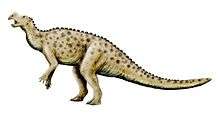

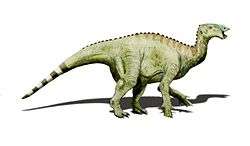
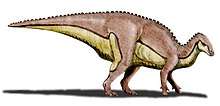
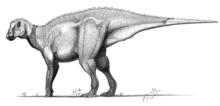
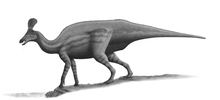
.jpg)